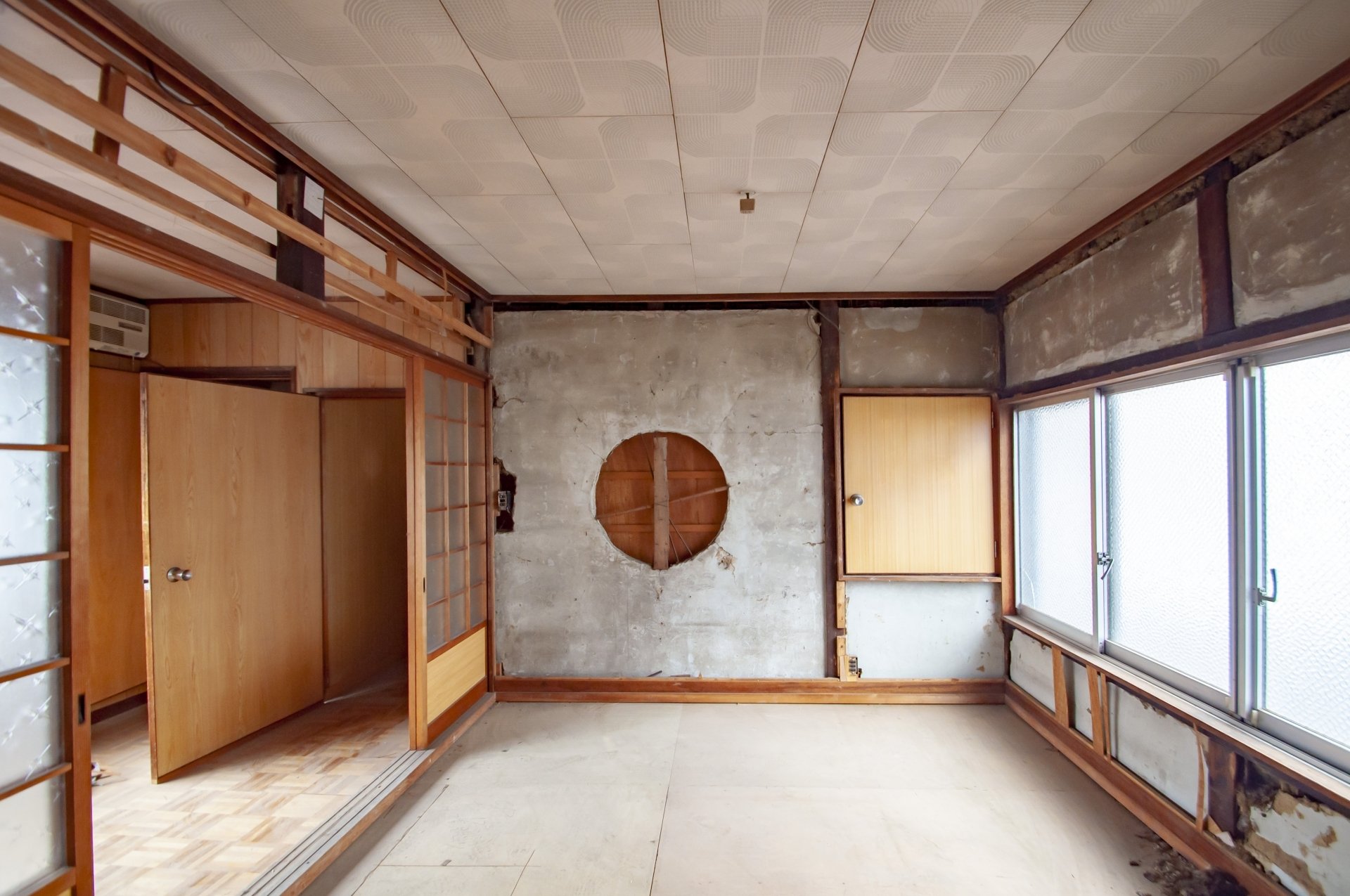You are having trouble paying off your mortgage, you need a large sum of money, but you do not want to give up your home you have lived in. Leaseback is an effective option for those who are suffering from this situation.
A leaseback is a mechanism that allows you to sell your home for cash and at the same time sign a lease agreement so that you can continue to live in the same residence after the sale. In recent years, it has attracted attention as a means of raising funds, and many real estate companies offer leaseback services.
In this article, INA&Associates, Inc. explains in detail the structure of leaseback, its usage, advantages and disadvantages, and points to note in an easy-to-understand manner for general consumers. If you are considering using leaseback, please read to the end.
What is the Mechanism of Leaseback?
Basic Concept of Leaseback
A leaseback (sale and leaseback) is a mechanism that allows a property owner to sell his/her property to a third party and then lease the same property from the buyer to continue using it.
Specifically, it consists of the following three steps
1. Sale (Sale): Your current home is sold to a real estate company or investor, and you receive the proceeds from the sale.
Lease: At the same time as the sale, a lease agreement is signed with the buyer.
Continued Residence: You can continue to live in the same residence while paying rent.
Form of Leaseback Contract
The main type of leaseback contract is a "fixed-term lease contract. A fixed-term lease contract is a contract with a clearly defined term that automatically expires at the end of the contract period.
Unlike a general lease contract (ordinary lease contract), the tenant does not have the right to request renewal of the contract, and thus must re-sign with the lessor for continued residence after the contract period ends.
Main participants in a leaseback
| Parties Involved | Role | Details |
|---|---|---|
| Seller (user) | Seller/lessee of real estate | Sells his/her home and pays rent to continue living in the home |
| Buyer (business) | Buyer/renter of real estate | Often real estate companies and investment management companies |
| Guarantee company | Rent guarantees | Examine the ability to pay rent and provide a guarantee |
| Financial institutions | Mortgage creditor | Pay off mortgage with proceeds from sale |
Background of Leaseback Drawing Attention
The following are some of the reasons why leaseback transactions have been attracting attention in recent years.
Aging of society: Elderly households are increasingly unable to meet their living expenses on pension income alone, and there is a growing need to raise funds by utilizing housing assets.
Difficulty in repaying mort gages: As economic conditions change, an increasing number of households are having difficulty repaying their mortgages, and there is a growing interest in leaseback financing, which allows them to raise funds without having to sell their homes.
Attachment to the living environment: Many households are choosing to avoid moving because of their attachment to the community and home they have lived in for many years, and they are choosing leaseback as a way to raise funds while continuing to live in the home.
Advantages of Leaseback
1. Ability to maintain a familiar living environment
The biggest advantage of a leaseback is that you can continue to live in your home after the sale. Since there is no need to move, the advantages include the following
-Maintain relationships with your neighbors.
-No change in your children's commute to school or work.
-Maintains a familiar living environment.
-Eliminates the cost and hassle of moving.
2. Quick access to large sums of money
In a leaseback, the real estate company pays the purchase price of the property in a lump-sum cash payment, so it does not take long for the seller to raise funds, which is a big advantage.
In a normal real estate sale, it may take several months to find a buyer, but with leaseback, financing can be procured in as little as one month.
3. Free use of funds
Since the funds obtained from the sale are your own funds, there are no restrictions on the use of the funds. They can be used for the following purposes
-Paying off a mortgage loan
-Business financing
-Medical and nursing care expenses
-Education expenses for children
-Retirement funds
-Investment funds
4. Reduction of Maintenance Expenses
After the leaseback, the property will be owned by the buyer, and the following maintenance and management costs will be borne by the buyer.
| Expense items | Conventional (when owned) | After leaseback |
|---|---|---|
| Property tax | Paid by owner | Buyer's burden |
| City planning tax | Owner's burden | Buyer's burden |
| Building repair expenses | Owner's burden | Buyer's burden |
| Fire insurance premiums | Owner's burden | Buyer's burden |
| Management fee and reserve for repairs | Owner's burden | Buyer's burden |
5. Possibility of future repurchase
In many leaseback contracts, a buyback clause can be attached. This allows you to repurchase the property in the future when your financial situation improves.
Disadvantages of leaseback
1. Sale price will be lower than the market price.
The purchase price in a leaseback generally tends to be 60% to 80% of the market price. This is due to the following reasons
-The buyer needs to secure an investment yield
-Pricing takes into account rental management risk
-Compensation for quick cash conversion
2. Rent burden is incurred.
After the sale, monthly rent payments are required . Rent is generally set by the following formula
Monthly rent = purchase price x expected yield / 12 months
The expected yield is usually set at 6%-10%, so the higher the purchase price, the higher the rent.
3. Limited contract period
Due to the fixed-term lease contract, there are restrictions on the contract term. Typical contract periods are as follows
| Contract Term | Characteristics | Applicable Cases |
|---|---|---|
| 2 to 3 years | Short-term contracts | Temporary financing |
| 5 to 10 years | Medium-term contracts | Typical contract term |
| Lifetime Contract | Long-term contracts | Service for the elderly |
4. High repurchase price
If you wish to repurchase, the repurchase price is generally set at 1.1 to 1.3 times the purchase price.
5. Loss of ownership
As ownership of the property transfers to the buyer, the following restrictions arise.
-Remodeling or reconstruction requires the buyer's permission.
-Loans secured by the property cannot be obtained
-The property loses its value as an inheritance.
Terms and Conditions for Using Leaseback
Basic Terms and Conditions
In order to use leaseback, the following conditions must be met .
1. Mortgage balance condition
The general condition for use is that the proceeds from the sale of the home > the remaining mortgage balance.
It is possible to sign a contract even in an overdrawn condition (i.e., the remaining mortgage balance exceeds the sale price), but this will be a significant financial burden since you will need to pay the monthly rent in addition to repaying the remaining mortgage balance.
2. Property Condition
The property to be sold must meet the following conditions
| Item | Condition | Details |
|---|---|---|
| Building Structure | No restrictions | Detached houses, condominiums, apartments, etc. |
| Age of building | No restrictions | Older properties are often eligible |
| Location | Areas with a certain level of demand | Location where rental demand can be expected |
| Building Condition | Habitable condition | Condition that does not require major repairs |
3. Consent of the owner(s) of the property
If the property is under co-ownership, the consent of all owners is required. If the property is jointly owned by a married couple, the consent and signatures of both spouses are required.
4. Ability to pay rent
You must be able to pay rent on an ongoing basis. The following items will be checked during the screening process
-The existence of a stable source of income
-Rent coverage as a percentage of income
-Credit history
-Availability of a guarantor
Points to be emphasized in the screening process
Leaseback operators are comprehensively screened from the following perspectives
Profitability of the property
-Location conditions and rental demand
-Condition of the building and future repair costs
-Rental rates in the surrounding area
-Future prospects for property value
Creditworthiness of users
-Stability and continuity of income
-Past payment history
-Other borrowing conditions
-Age and health status
Flow of Leaseback Utilization
STEP1: Consultation and selection of a firm
The first step is to consult with a leaseback operator. It is important to consult with multiple operators and compare the following points
-Level of purchase price
-The appropriateness of the rent setting
-Content of the terms and conditions of the contract
-Reliability and track record of the operators
STEP2: Provisional appraisal
Based on basic information about the property, a tentative appraisal will be conducted. The contents presented at this stage are as follows.
| Appraisal Items | Contents | Points to note |
|---|---|---|
| Provisional purchase price | Approximate selling price | Possibility of fluctuation in the formal appraisal |
| Estimated rent | Approximate monthly rent | Reference for final rent setting |
| Contract Term | Term of the lease contract | Confirm possibility of renewal |
STEP3: On-site survey and main appraisal
An on-site survey is conducted by a real estate professional and a detailed assessment is made. The survey items are as follows
-Structure and condition of the building
-Condition of facilities
-Surrounding environment and location conditions
-Confirmation of legal constraints
STEP4: Formal presentation of terms and conditions
Based on the results of this assessment, formal terms and conditions of the contract will be presented. At this stage, the following details are finalized
-Final purchase price
-Monthly rent
-Term of the contract
-Repurchase terms (if any)
-Other terms and conditions of the contract
STEP5: Contract Signing
If the terms and conditions are agreed upon, the following contracts are concluded at the same time: .
Real estate sales contract: Contract regarding the sale of the property.
2. Lease contract: Contract for the lease of the property
STEP6: Settlement and start of leasing
Settlement of the purchase price is made and the lease contract begins at the same time. If there is a mortgage remaining, it will be paid off with the proceeds from the sale.
Required Documents
The following documents are required for a leaseback contract.
Identification documents
-Driver's license
-Passport
-My number card
Property-related documents
-Certificate of registered matters
-Property tax notice
-Building Permit
-Explanation of Important Matters (at the time of purchase)
Income related documents
-Withholding Tax Certificate
-Tax returns
-Pay slips
-Pension Certificate
Mortgage Documents
-Loan agreement
-Repayment schedule
-Balance Certificate
Points to note when using leaseback
Important items to be confirmed before signing the contract
1. Appropriateness of the rent setting
Rent in a leaseback tends to be set higher than the general rental market rate. Before signing a contract, be sure to confirm the following points
-Comparison with the rental market in the surrounding area
-Whether there is a clause to raise the rent
-Is the rent set at an amount that you can afford?
2. Contract Term and Renewal Conditions
A fixed-term lease contract does not guarantee renewal at the end of the contract period. It is important to confirm the following points in advance.
| Items to be confirmed | Importance | Contents of confirmation |
|---|---|---|
| Contract Term | High | How many years can you continue to live there? |
| Renewability | High | Conditions and possibility of renewal |
| Rent at renewal | Medium | Availability of rent change at renewal |
| Conditions for moving out | High | In which case eviction is required |
3. Details of repurchase conditions
If you are considering a buyback, confirm the following conditions in writing at .
-Possible repurchase period
-How the repurchase price will be calculated
-Procedures to be followed at the time of repurchase
-Assignability of the right to repurchase
Common Trouble Cases and Countermeasures
1. Trouble with rent increase
Example: A large rent increase was demanded at the time of contract renewal.
Countermeasures: -Confirm the details of the rent change clause in the contract.
-Check the details of the rent change clause in the contract.
-Clarify the conditions on which the rent increase is based.
-Prepare materials comparing the rent with the surrounding market rate.
2. Trouble of refusal of contract renewal
Example: Contract renewal was refused and the tenant was asked to move out at the end of the contract period.
Countermeasures
-Clarify the conditions for renewal in the contract.
-Confirm in advance the justifiable reasons for refusal of renewal
Consider multi-year or lifetime contracts
3. Trouble with change of repurchase terms
Example: Wanted to repurchase, but was offered conditions different from the original conditions.
Countermeasures
-Document repurchase terms in detail.
-Clearly define the method of price calculation
Use of a third-party price assessment
Property management problems
Example: Delayed repair of equipment failure, resulting in disruption of daily life
Countermeasures: - Clarify the scope of responsibility for repairs.
-Clarify the scope of responsibility for repairs
-Confirm emergency contact system
-Set a deadline for repairs
How to recognize a bad builder
Characteristics of dangerous contractors
We recommend avoiding the following types of contractors
- Aggressive sales: Long sales visits and rushing to sign a contract.
- Unclear terms and conditions: Vague explanation of contract terms.
- Conditions far from the market: Extremely low purchase price or high rent
- Insufficient explanation in writing: Explanation relying on oral promises
How to Select a Reliable Contractor
- Track record and reliability: Extensive track record of transactions and good reputation
- Transparency: Detailed explanation of contract terms and conditions
After-sales support: Post-contract support system
- Reasonable pricing: Offer terms and conditions based on the market rate.
Points to be confirmed in the contract
Required Confirmation Items
| Item | Contents of Confirmation | Importance |
|---|---|---|
| Purchase price | Purchase price and payment terms | High |
| Rent | Monthly rent and payment terms | High |
| Contract Term | Length of lease contract | High |
| Renewal Conditions | Possibility and conditions of contract renewal | High |
| Repurchase terms | Repurchase price and term | Medium |
| Repair liability | Classification of repair cost burden | Medium |
| Termination Conditions | Conditions and Penalties for Cancellation Before Termination | Cancellation before maturity |
Confirmation of special terms and conditions
-Clauses regarding rent increase
-Restrictions on use of the property
-Prohibition on subletting to third parties
-Permission to keep pets
-Restrictions on remodeling and reconstruction
Importance of Consulting an Expert
Because leaseback agreements are complex transactions, consultation with the following professionals is strongly recommended
Real estate appraiser
-Evaluation of the fair value of the property
-Determination of the appropriateness of the purchase price
Lawyer
-Confirmation of the contents of the contract
-Evaluation of legal risk
Financial planner
-Development of financial plan
-Simulation of future income and expenditure
Tax accountant
-Tax treatment of sale
-Examination of tax-saving measures
Conclusion
Leaseback is an effective way to raise a large amount of funds without giving up your familiar home. It is a particularly beneficial option for the following people.
Those for whom leaseback is suitable
- Those who are having trouble paying off their mortgages: Pay off your mortgage with the proceeds from the sale and reduce your monthly burden.
- Those who need a large sum of money to finance their business, medical expenses, education, etc.
- Those who do not want to change their living environment: Avoid environmental changes by moving.
- Those who want to reduce maintenance costs: Reduce the burden of property taxes and repair costs
Key Points for Success
1. Comparative study with multiple companies: Comprehensive comparison of purchase price, rent, and contract conditions
2.Check the details of contract terms: Focus especially on renewal terms and repurchase terms.
Consult with experts: Refer to the opinions of real estate appraisers, lawyers, FPs, and other experts.
4 . Long-term financial planning: Establish a future income and expenditure plan, including rent payment ability.
Selection of a reliable leasing company: Select a leasing company with a proven track record and reliability.
If properly utilized, leaseback is an excellent mechanism to raise funds while maintaining the living environment. However, depending on the details of the contract, it may cause problems in the future.
We recommend that you make the best choice for your situation through careful consideration and consultation with a specialist.
Frequently Asked Questions
Q1. How many years can I continue to live in the property after the leaseback?
A1. The length of the contract varies depending on the operator and the terms of the contract, but in general, fixed-term lease contracts of 2 to 10 years are common. Some operators also offer lifetime contracts, but there is no guarantee of contract renewal. It is important to confirm the renewal terms in detail before signing a contract.
Q2. How do leaseback rents compare to the general rental market?
A2. Le aseback rents tend to be set 10% to 30% higher than the general rental market rate. This is to ensure an investment yield for the operator. The higher the purchase price, the higher the rent, so it is important to consider the overall income and expenditure.
Q3. Can I use leaseback even if I still have a mortgage?
A3. You can use a leaseback even if you still have a mortgage, but you must be able to pay off the loan with the proceeds from the sale. If you are in an overdrawn situation, you will need to make up the shortfall with your own funds.
Q4. Can I buy back the property after the leaseback?
A4. Many companies offer a buy-back clause. However, the repurchase price is generally set at 1.1 to 1.3 times the purchase price. It is important to confirm the repurchase terms in detail at the time of contract and to clearly state them in writing.
Q5. Does the cooling-off period apply to leaseback contracts?
A5. Le aseback contracts are not subject to cooling-off. As a general rule, no cancellation is allowed after the contract has been signed, so careful consideration before signing is essential. We recommend that you consult with a specialist if you have any questions, and sign the contract only after you fully understand the terms and conditions.

Daisuke Inazawa
Representative Director of INA&Associates Inc. Based in Osaka, Tokyo, and Kanagawa, he is engaged in real estate sales, leasing, and management. He provides services based on his extensive experience in the real estate industry. Based on the philosophy that “human resources are a company's most important asset,” he places great importance on human resource development. He continues to take on the challenge of creating sustainable corporate value.

.png)













